Avis expert seisme 20 mai 2012 Italie - CCR
PUBLICATIONS
Expert opinion : Earthquake with a magnitude of 5.9, on Sunday 20 May 2012, struck the region of Pianura Padana - Emiliana (Italy)
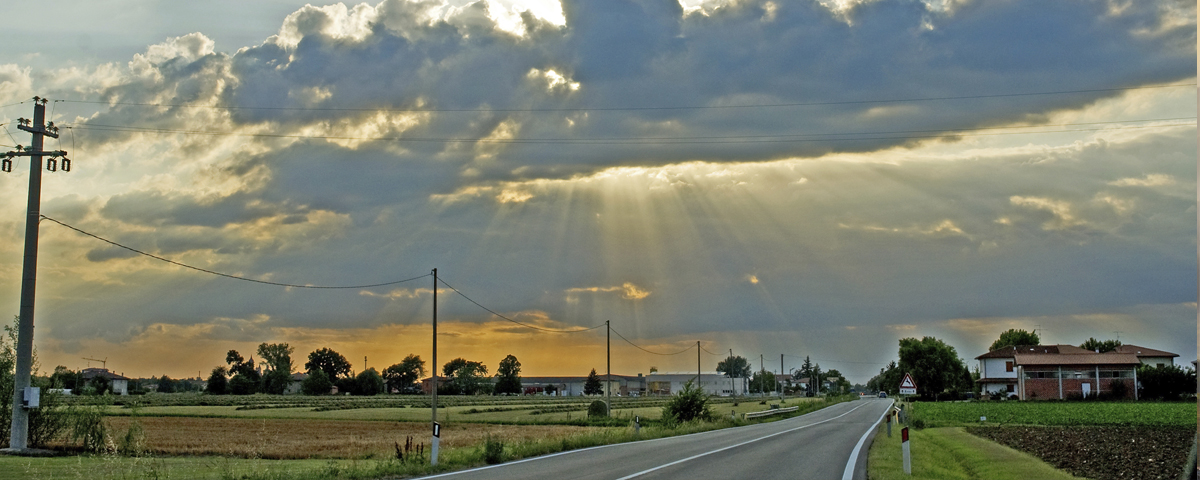
On Sunday 20 May 2012, at 4:03 am, an earthquake with a magnitude of 5.9 struck the region of Pianura Padana Emiliana, in the Pô river plain in north-eastern Italy.
05/22/2012
Resume
On Sunday 20 May 2012, at 4:03 am, an earthquake with a magnitude of 5.9 struck the region of Pianura Padana Emiliana, in the Pô river plain in north-eastern Italy. The hypocentre was at a depth of 6.3 km, 10 km from Finale Emilia in the province of Modena and 36 km north of Bologna.
The earthquake was felt throughout north-eastern Italy, in an area between Modena, Bologna and Venice. The greatest damages were inflicted in San Felice, and other villages close to Ferrara and Modena and next to Bologna. There was substantial damages to historic monuments and the architectural heritage in general. A series of more than 170 aftershocks was recorded within 28 hours after the mainshock (figure 1). Two of these aftershocks had a magnitude greater than 5.
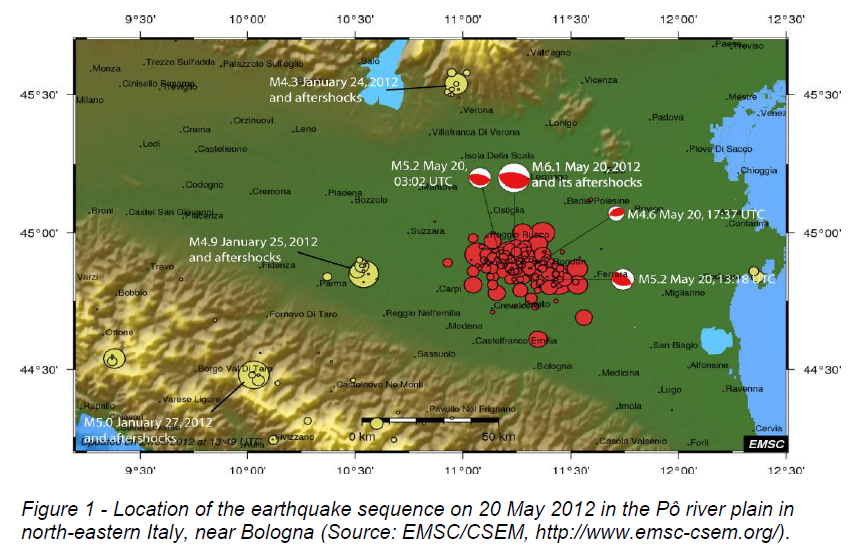
Context
The seismic risk in this region had been determined as being low to moderate (figure 2). Until this event, no major earthquake had been recorded in a 30 to 40 kilometre zone around the epicentre.
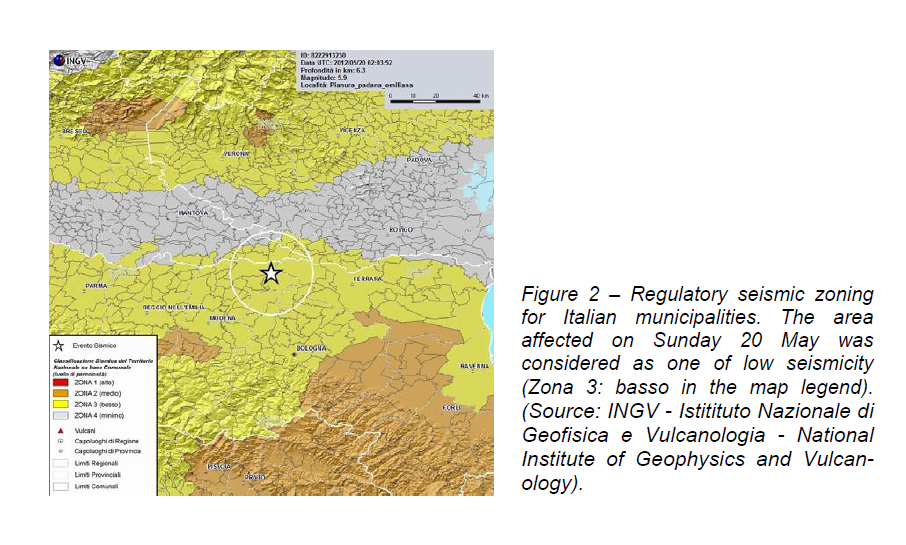
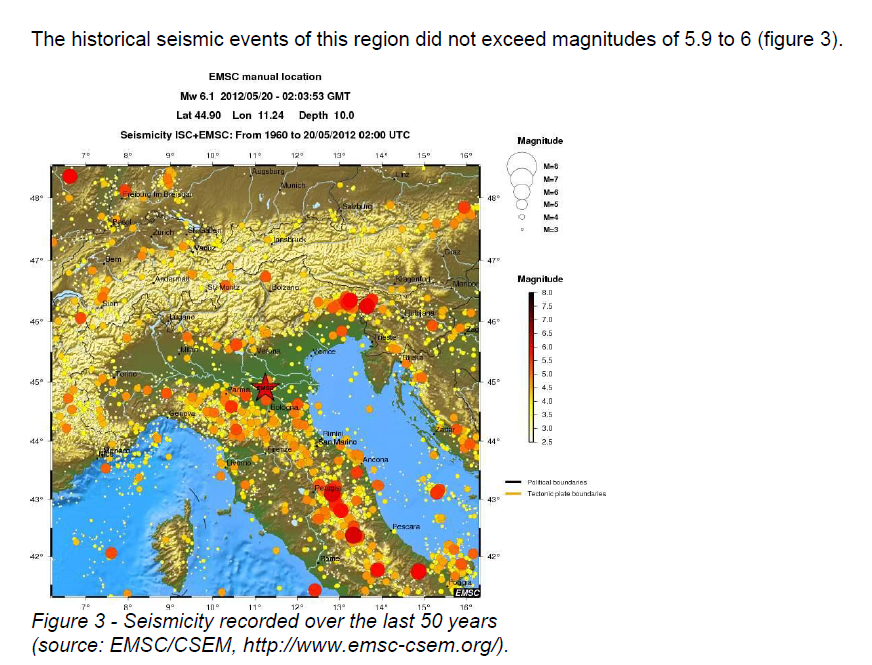
Although the magnitudes of potential earthquakes in the region remains moderate, the shallow depth of hypocentres increases the intensity felt in the surface. Finally, the site effects related to the geology of the Pô plain (soil liquefaction) can also potentially increase the severity of damage.
The Apennines mountains, backbone of the Italian peninsula, is formed within a complex tectonic context resulting from the collision between Africa and Europe. The Adriatic microtectonic plate in the Pô plain is compressed between the Alps and the Apennines. The average displacements of plates in this region is about 2 mm/year. In comparison, convergence velocities in France are estimated at less than 1 mm/year on the continent but about 2 cm/year in the French Caribbean overseas territories.
Initial estimations of the source were consistent with a fault responsible for the earthquake being located at a depth between 3.9 and 7.6 km and ranging over a length of about 8.7 km.
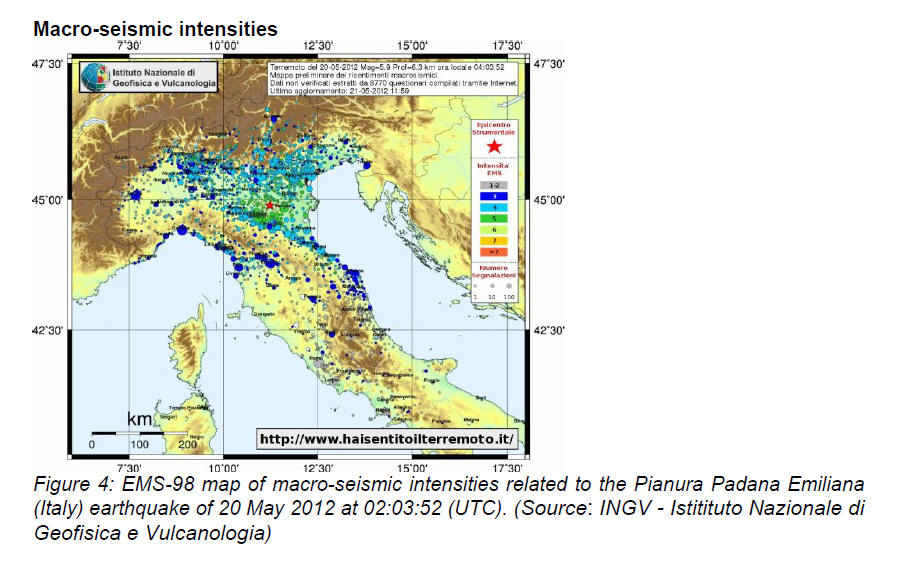
Area of perceived impact (shaking)
The map of maximal theoretical intensity (figure 5) shows that a region of about 30 x 30 km around the epicentre could have been affected by intensities able to reach VII-VIII on the EMS-98 scale.
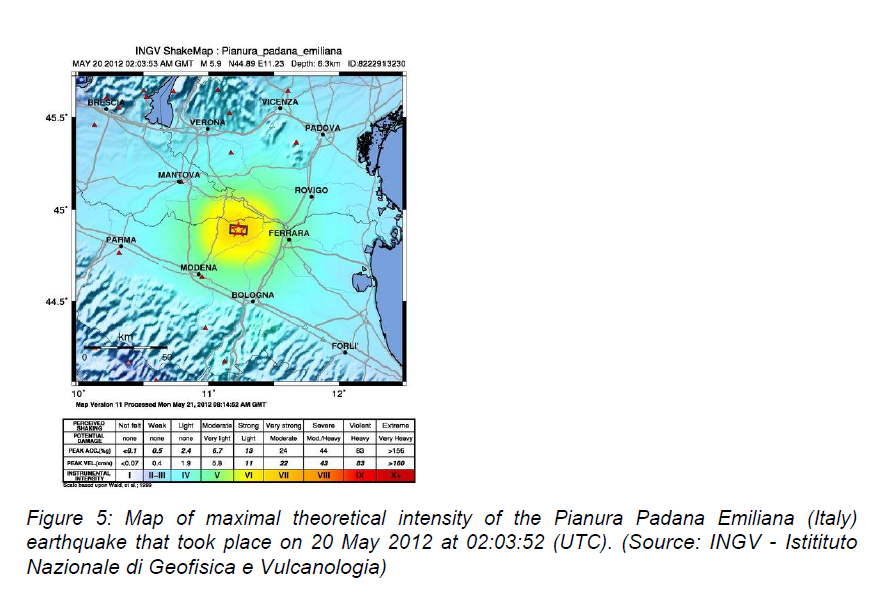
Principal damage
- San Felice: church, town hall and many buildings collapsed
- breaking away of the top part of a tower in the Galeazza castle
- hangar at Ponte Rodoni di Bondeno collapsed
- a factory roof in Sant’Agostino collapsed
- houses and buildings collapsed
- support walls, inside walls and concrete slabs collapsed
- cracks on walls and bell-gable buildings
- masonry detached from building facades and vehicles on the streets crushed
Major earthquakes in Italy over the past 20 years
- 6 April 2009: 6.3, L’Aquila, Abruzzes, 299 dead and 50,000 homeless, extensive
- material damage.
- 31 October 2002: 5.9, Molise, San Giulano di Puglia, Pouilles, 30 dead, 60 injured.
- 6 September 2002: 6.0, Palermo, Sicily, 2 dead.
- 17 July 2001: 5.2, Bolzano, Haut-Adige, 3 dead.
- 26 September 1997: 6.1, Ombrie and Marches, 12 dead, more than 110 injured and 38,000 homeless, the Saint-François d’Assise basilica was damaged.
- 13 December 1990: 5.8, Catane and Raguse, Sicily, 17 dead, 200 injured, 2,500 homeless.
- 5 May 1990: Potenza, Basilicate, 4 dead.
Cost of the catastrophe
First assessments were that the cost to insurance companies would be about €100 million, without exceeding €200 million (source: EQECAT, 21/05/2012), but the costing of earthquake damage is always difficult to determine in Italy.
The earthquake insurance system in Italy is different from that in France, since in Italy, coverage depends on personal insurance and results in a very low penetration rate of about 10% for individuals and 30% for professionals. The conditions for obtaining insurance policies are relatively restrictive and compensation limits are low (generally 30 to 50% of total insured value, less a deductible of several percent of the total insured values).
Since 1970, total economic damage resulting from earthquakes in Italy has been estimated at around €55 billion but only ~2% (€1.1 billion) have been to the charge of the insurance industry. Until recently, the Italian government had been legally obligated to provide financial assistance for the reconstruction of homes, as was the case following the Aquila earthquake in 2009. A decree-law published on 17 May 2012, just before the latest earthquake, abrogated this obligation, but the Pianura Padana Emiliana earthquake may not be concerned by this change.
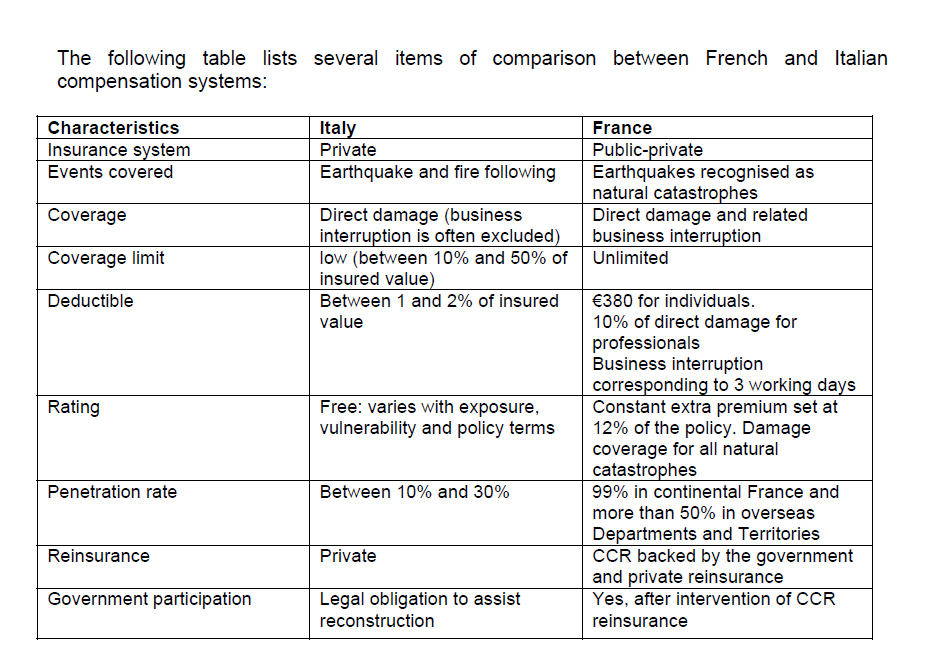
And France?
This earthquake occurred more than 300 km from France. Adjustments of the mechanical stresses affecting the various micro-plates between Italy and France do not suggest consequences for France at the present time. The probabilities of occurrence of seismic events that could involve France remain unchanged.
More generally, although the French seismic context is slightly different (plate displacements along faults a priori lower), a magnitude 6 earthquake at a shallow depth is entirely possible in several French regions, in particular the Pyrenees, Côte d’Azur, Alsace and Provence.
The last major earthquake to affect France occurred in Provence, 20 km northwest of Aix-en- Provence, near Marseille, (Lambesc in 1909, magnitude estimated at 6 to 6.2) that resulted in about 50 fatalities and destroyed more than 2,000 buildings.

